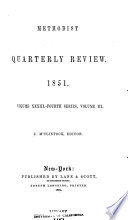 | William Sharp - 1885 - 300 pages
...equal times. 3d. — The squares of the times of revolution of any two planets are to each, other, in the same proportion as the cubes of their mean distances from the sun. "Of all the laws," says SIR JOHN HERSCHEL, "to which induction from pure observation has ever conducted... | |
 | Benjamin Williamson, Francis Alexander Tarleton - 1885 - 480 pages
...the Sun in a focus. (3) That the squares of the periodic times for any two planets are to each other in the same proportion as the cubes of their mean distances from the Sun. From the first of these laws Newton deduced (Art. 154) that each of the planets is kept in its orbit... | |
 | Theosophical Society (Madras, India). Blavatsky Lodge - 1890 - 124 pages
...impossible in planetary motion. 35 squares of the periodic times of any two planets are to each other, in the same proportion as the cubes of their mean distances from the Sun ", gives rise to the curious result of a permitted libration in the eccentricities of planets. Now... | |
 | William Sharp - 1894 - 244 pages
...equal tirru'S. 3d. — The squares of the times of revolution of any two planets are to each other, in the same proportion as the cubes of their mean distances from the sun. "Of all the laws," says SIR JOHN HERSCHEL, "to which induction from pure observation has ever conducted... | |
 | 1895 - 430 pages
...Elementary Lessons in Astronomy. The squares of the periodic times of any two planets are to each other in the same proportion as the cubes of their mean distances from the Sun.—JferscM's Treatise on Astronomy. As the cube of the radius cf a senior planet's orbit is to... | |
 | 1896 - 410 pages
...following proposition : — "The squares of the periodic times of any two planets are to each other, in the same proportion as the cubes of their mean distances from the sun." Take, for example, the Earth and Mars whose periods are in the proportion of 3652564 to 6869796, and... | |
 | 1901 - 304 pages
...the foci of the orbit, that the radius vector of each planet describes equal areas in equal times and that the squares of the periodic times of the planets...as the cubes of their mean distances from the sun. Newton came to believe from analogy of bodies falling to the earth that gravitation was the cause of... | |
 | 1918 - 624 pages
...occultist, may be stated. [1] That the path of a circle is impossible in planetary motion. each other, in the same proportion as the cubes of their mean distances from the Sun", gives rise to the curious result of a permitted libration in the eccentricities of planets. Now the... | |
 | 1851 - 702 pages
...following proposition : — ' The squares of the periodic times of any two planets are to each other, in the same proportion as the cubes of their mean distances from the sun.' Take, for example, the Earth and Mars,* whose periods are in the proportion of 3,652,564 to 6,869,796,... | |
 | Josephus Nelson Larned - 1918 - 424 pages
...that the radius vector of each planet, drawn from the sun, describes equal areas in equal times; and that the squares of the periodic times of the planets...as the cubes of their mean distances from the sun. By these three laws of planetary motion, Kepler had blazed out the trail which, toward the close of... | |
| |